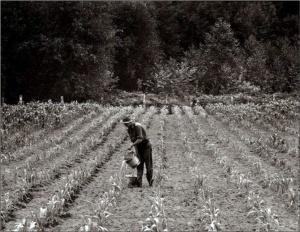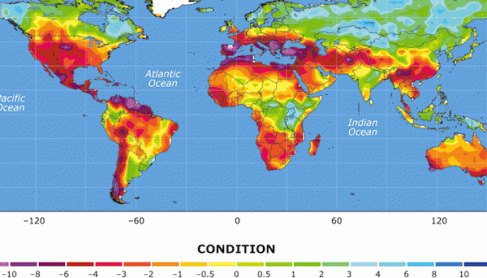The National Oceanographic Atmospheric Administration confirmed that the record-breaking warmth in July was part of the warmest 12-month period experienced by the lower 48 states since the 19th century. In fact, this past July was the hottest month on record for the continental states since such record keeping started in 1895. Additionally, the drought conditions caused by the heat has expanded to cover 63% of the continental United States (http://weather.aol.com/2012/08/08/july-2012-is-hottest-month-on-record-in-u-s/#page=1).
Now we are witnessing some unexpected effects of this year’s hot weather. First of note is a major bear problem across the country. As a consequence of lack of availability of their normal diets of greens and berries because of failed production, bears are out in record numbers seeking food by rummaging through garbage, ripping through screens on houses and even crawling into cars in search of food. Problems with bears invading human space have been noted all over the country. Fortunately, no injuries to humans have been cited. The bear problem also could further hurt farmers, who already have been negatively impacted by the harsh drought conditions, especially corn farmers. As the hot weather has negatively affected the availability of acorns and beechnuts, on which bears typically rely, these animals now are forced to fatten up on corn. In some states, such as Vermont, the Department of Fish and Wildlife has recommended that farmers bring in their corn crops as soon as possible.
A second adverse effect of harsh summer weather is poor air quality and its resultant increases in heat-related illnesses. Heat waves lead to heat strokes and dehydration, representing the most common cause of weather-related deaths. Warmer temperatures in urban centers place an increase demand for electricity, which in turn results in increased air pollution and greenhouse emissions from power plants. Extreme heat conditions trigger severe storms that threaten human life and health in numerous ways, including, but not limited to:
• Reduction of available fresh food and water;
• Interruption of communication, utility and healthcare services;
• Contribution of carbon monoxide poisoning from the use of portable generators during storms;
• Increases stomach and intestinal illnesses among evacuees;
• Contribution to mental health problems, such as depression and posttraumatic stress disorder.
Thirdly, the economic impact of harsh summer weather causes overwhelming energy demands resulting in brownouts and blackouts that threaten business operations and daily lives of citizens. Sea level rise and frequent intense storms disrupt energy production and delivery. Extreme heat negatively affects travel and tourism with the loss income completely destroying seasonal businesses that totally rely on the summer months for their survival.
While these excruciating hot summers may represent an inconvenience to some people, the reality is that severe heat and drought conditions threaten our very existence. As scientists work to find solutions to these problems, we all need to be mindful of the steps we can take to reduce our environmental footprints. In other words, let’s strive to be part of the solution and not part of the problem. Let’s live green, be green.


